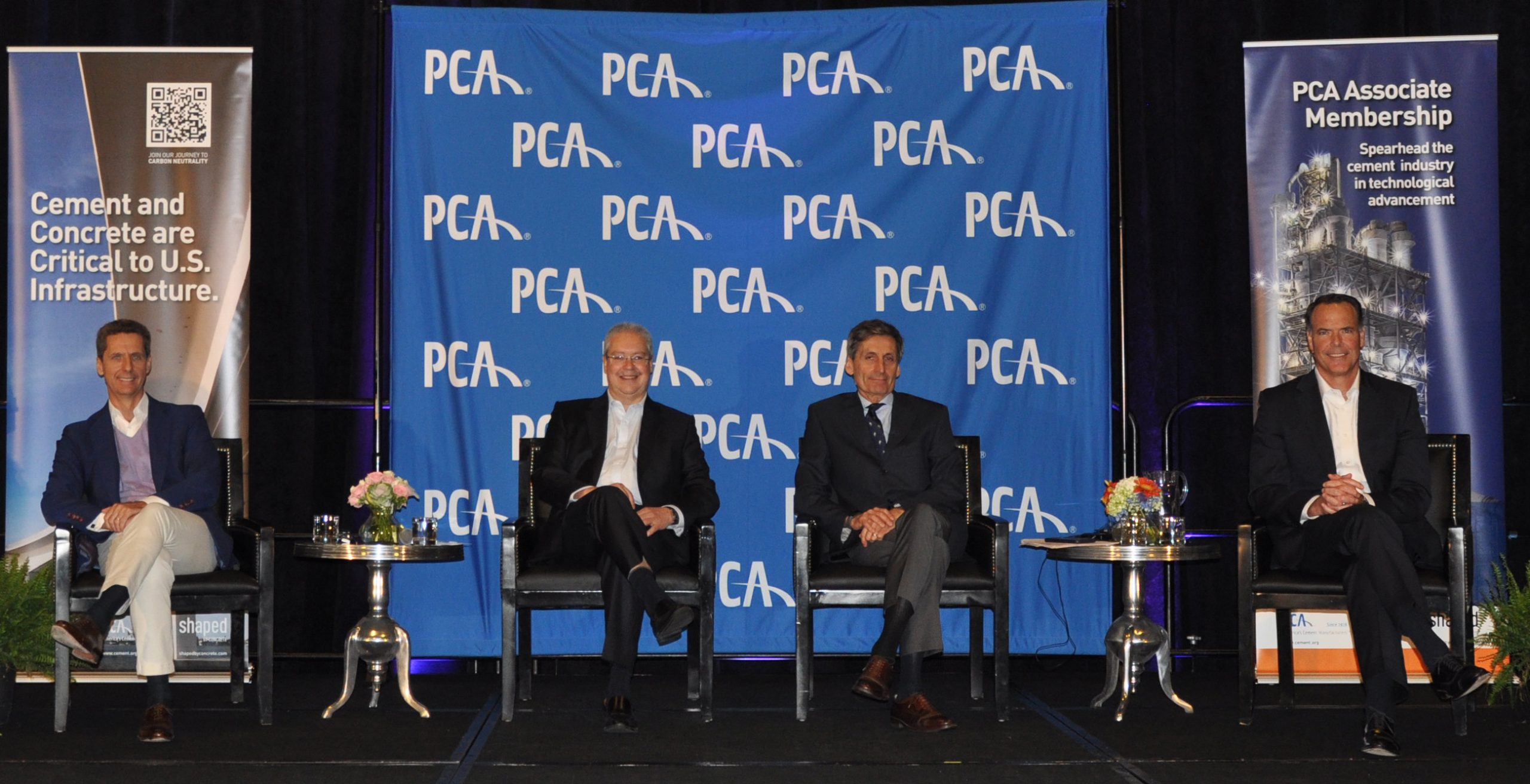Cement leaders: Permitting, regulatory certainty drive CO2 down
Sources: Cement Products staff; Portland Cement Association, Washington, D.C.
Convening for a panel during the IEEE-IAS/PCA Cement Conference in Dallas, Portland Cement Association producer member executives confirmed that alternative fuel usage, renewable energy-powered plant operations, and carbon capture storage (CCS) technology are positioning their industry to reduce greenhouse gas emissions on the PCA Roadmap to Carbon Neutrality 2050 timetable.
Cemex USA President Jaime Muguiro cited his company’s present 23 percent refuse-derived fuel metric in clinker production toward a 2025 target of 42 percent. “We need to work with federal and state governments to develop a larger supply chain,” he observed. “Many wastes that could be recovered are going to landfills.”
PCA Chair and Votorantim Cimentos North America CEO Filiberto Ruiz noted how refuse-derived fuels have GHG reduction benefits on two fronts: Lowering carbon dioxide emissions in cement clinker production by replacing fossil fuels, and curtailing prospective emissions of methane—a compound with up to 20 times the global warming potential of CO2—generated from landfilling materials with cement calciner- or kiln-grade calorific value.

“Sustainability in the Cement Industry” panelists (from left) Cemex USA’s Jaime Muguiro, VCNA’s Filiberto Ruiz, Buzzi Unicem’s Massimo Toso and Heidelberg Materials’ Chris Ward.
PCA Vice Chair and Buzzi Unicem USA CEO Massimo Toso referenced a 17,000-megawatt capacity solar farm that commenced operation last month at the company’s Alamo Cement plant in San Antonio. As a long-term renewable energy source, the 24,700-panel array will avoid power provider CO2 emissions by supplying up to 15 percent of the mill’s electricity requirements.
Heidelberg Materials North America CEO Chris Ward reviewed progress of CCS facility development and engineering efforts, respectively, at the company’s Edmonton, Alberta and Mitchell, Indiana cement operations. Both projects will follow an inaugural installation at a Norway sister plant scheduled for late-2024 start up. Major carbon management investments at all three plants are part of parent company HeidelbergCement AG’s goal to capture 10 million metric tons of CO2 from global cement operations by 2030.
In addition to individual company initiatives aligned with PCA Roadmap to Carbon Neutrality goals, the executives stressed the need for regulatory certainty as a backstop to current CO2 emissions reduction technologies’ high capital investment requirements.